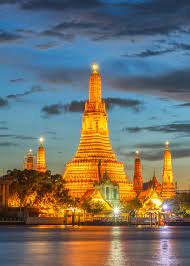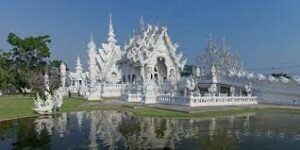Thailand, with its lush landscapes, vibrant culture, and ancient traditions, is a country steeped in history. At the heart of this rich heritage are its magnificent temples, known as “wats.” These temples are not mere structures; they are living repositories of faith, art, and community. Join us on a captivating journey through Thailand’s iconic temples, where spirituality and architectural splendor converge.
Buddhism in Thailand: A Spiritual Tapestry
Buddhism arrived in Thailand over a thousand years ago, carried by Indian and Sri Lankan missionaries. Since then, it has become an integral part of Thai life, shaping everything from daily rituals to artistic expression. The temples, adorned with intricate carvings and gilded spires, stand as tangible manifestations of this enduring faith.
Historical Context
Temples as Pillars of Society
Thai temples serve as more than religious centers; they are hubs of education, community gathering, and cultural preservation. Monks play a vital role in teaching, providing spiritual guidance, and maintaining the temples. These sacred spaces are woven into the fabric of Thai society, bridging the past and the present.
Iconic Temples and Their Histories
1. Wat Phra Kaew (Temple of the Emerald Buddha), Bangkok
- History: Commissioned by King Rama I in 1782, Wat Phra Kaew is the most revered temple in Thai Buddhism. Nestled within the Grand Palace, it houses the sacred Emerald Buddha—a figurine carved from a single block of jade. This temple is not a residence for monks but a private chapel for the royal family.
- Architecture: The main ordination hall (Ubosot) showcases Thai craftsmanship. The Emerald Buddha, adorned in gold garments, symbolizes prosperity and safety for the country. Intricate murals on the walls depict scenes from the Thai epic, Ramakien.
- Cultural Significance: Beyond religion, Wat Phra Kaew represents the heart of the Thai kingdom and identity. Visitors are greeted by golden spires, mythical statues, and a journey through Thai history.

2. Wat Pho (Temple of the Reclining Buddha), Bangkok
- History: Dating back to the 16th century, Wat Pho predates Bangkok as the capital. Major restorations occurred during King Rama I’s reign. It is home to the massive reclining Buddha—a 46-meter-long marvel covered in gold leaf.
- Significance: Wat Pho is not only a place of worship but also a center for traditional Thai medicine and massage. Its tranquil courtyards and serene atmosphere invite contemplation.
3. Wat Arun (Temple of Dawn), Bangkok
- Design: Wat Arun’s unique design features prang (towers) adorned with porcelain tiles and seashells. The central prang symbolizes Mount Meru, the mythical center of the universe.
- Symbolism: The temple’s towering spires represent the transition from earthly existence to spiritual enlightenment. Its location by the Chao Phraya River adds to its allure.
4. Wat Rong Khun (White Temple), Chiang Rai
- Contemporary Artistry: Unlike traditional temples, Wat Rong Khun is a modern masterpiece. Artist Chalermchai Kositpipat envisioned it as a fusion of art, religion, and social commentary.
- Visionary Elements: The white exterior symbolizes purity, while the intricate murals inside blend traditional Buddhist themes with pop culture references.
Lesser-Known Gems
- Wat Mahathat, Ayutthaya: Amid ancient ruins, this temple houses a serene Buddha head entwined in tree roots—a poignant reminder of impermanence.
- Wat Suthat, Bangkok: Known for its giant red swing, this temple boasts exquisite murals and a peaceful atmosphere.
- Wat Benchamabophit, Bangkok: The “Marble Temple” combines Thai and European architectural styles, with white Carrara marble and ornate gables.
Architectural Features
- Stupas: Bell-shaped structures symbolizing enlightenment.
- Prayer Halls (Ubosot): Where ceremonies and ordinations take place.
- Intricate Carvings: Depicting mythical creatures, deities, and epic tales.









